British-operated F-35B Lightning stealth jets are scheduled to fly combat missions over the Middle East during the first operational cruise of the Royal Navy aircraft carrier HMS Queen Elizabeth, which starts later this month. The short takeoff and vertical landing (STOVL) jets, which will be embarked on the Royal Navy flagship alongside examples from the U.S. Marine Corps, are the first British fighters to be embarked on an operational carrier since 2010, during the last days of the British Harrier jump jets.
“The F-35B Lightning jets pack a potent punch against Daesh and help prevent them from regaining a foothold in Iraq,” said U.K. Minister for the Armed Forces James Heappey, in a statement released today, together with the accompanying images, showing the first British F-35Bs to go aboard the carrier for the upcoming cruise. “This is a prime example of the U.K. Armed Forces stepping forward with our allies to confront persistent threats around the world. It is Global Britain in action.”
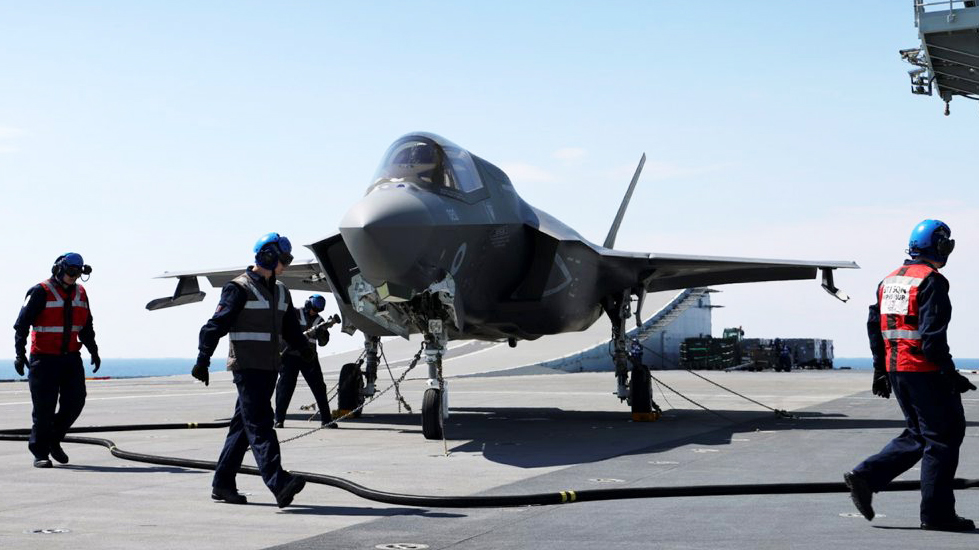
“This deployment represents the embodiment of the UK’s Joint Expeditionary Capability and utilizing the F-35Bs in the fight against Daesh will further demonstrate our commitment to securing their global defeat,” said Chief of Joint Operations, Vice Admiral Sir Ben Key.
While the U.K. has previously committed F-35Bs to its counter-ISIS campaign — known as Operation Shader — on that occasion, in the summer of 2019, the jets were flown from the Royal Air Force’s land base at Akrotiri, in Cyprus, in the eastern Mediterranean. In the meantime, RAF Eurofighter Typhoons have been spearheading the Operation Shader missions over Iraq and Syria, including the recent employment of the Storm Shadow standoff cruise missile.
For their next combat deployment, the F-35Bs from the RAF’s famous No 617 Squadron, the “Dambusters,” will be flying from HMS Queen Elizabeth, as the warship begins Carrier Strike Group 21, or CSG21, a cruise that will take it via the Mediterranean to the Indo-Pacific.
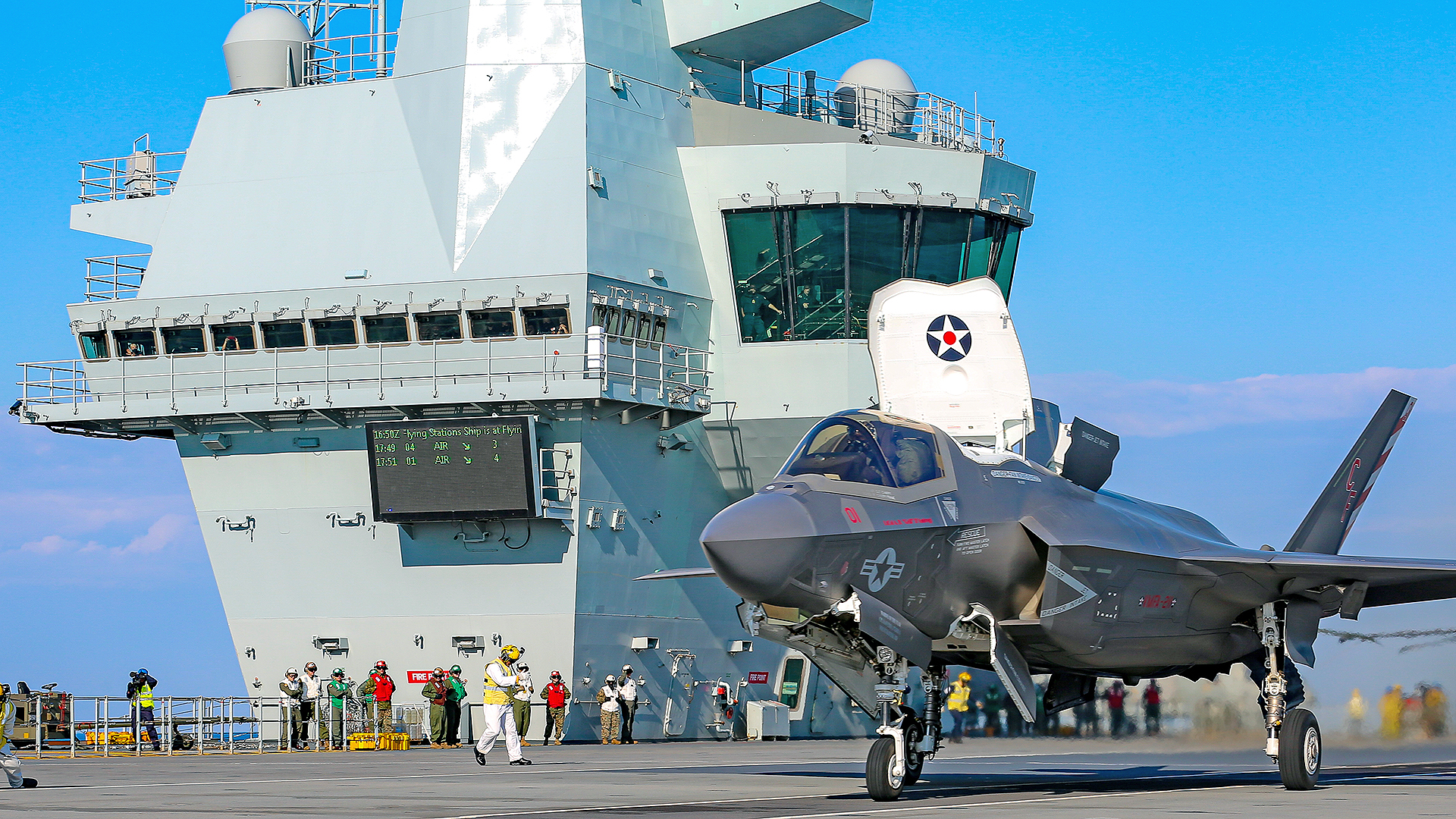
The timing of this latest combat deployment of the U.K. F-35B is notable in that the tempo of coalition airstrikes against ISIS targets has reduced significantly since the previous deployment at Akrotiri. Indeed, between late 2019 and early 2020, the RAF almost ceased airstrikes in the region altogether. On the other hand, there has been somewhat of an uptick in activity since the beginning of this year, including the aforementioned Typhoon cruise missile raid and a series of strikes last March that targeted around 100 cave hideouts in a 10-day period. Overall, however, it remains to be seen how much of an impact the carrier-based F-35Bs will be able to have on the conflict, which will depend also on the time that HMS Queen Elizabeth is planned to remain on station in the Mediterranean.
There is no confirmation so far as to whether VMFA-211 will take part in these combat missions, although the squadron has already accumulated significant combat experience with the F-35B, since first taking it to war over Afghanistan in 2018.
Exactly how many F-35Bs will be embarked on board the carrier has also not been formally announced, but the U.K. Ministry of Defense says it “will be the largest number of F-35Bs ever to [go to sea]” and it has also stated that eight British jets will go aboard the carrier. However many more U.S. jets join them, this implies the total will be more than the 15 British and American jets that were on the carrier for an exercise last September, which you can read more about here.
The U.K. Ministry of Defense has, in the past, also said that the fixed-wing air group for CSG21 will be the biggest “since HMS Hermes,” a significantly smaller carrier, but one that served in the Falklands conflict with an air group of 16 Sea Harriers and 10 RAF Harrier GR3s, plus helicopters.
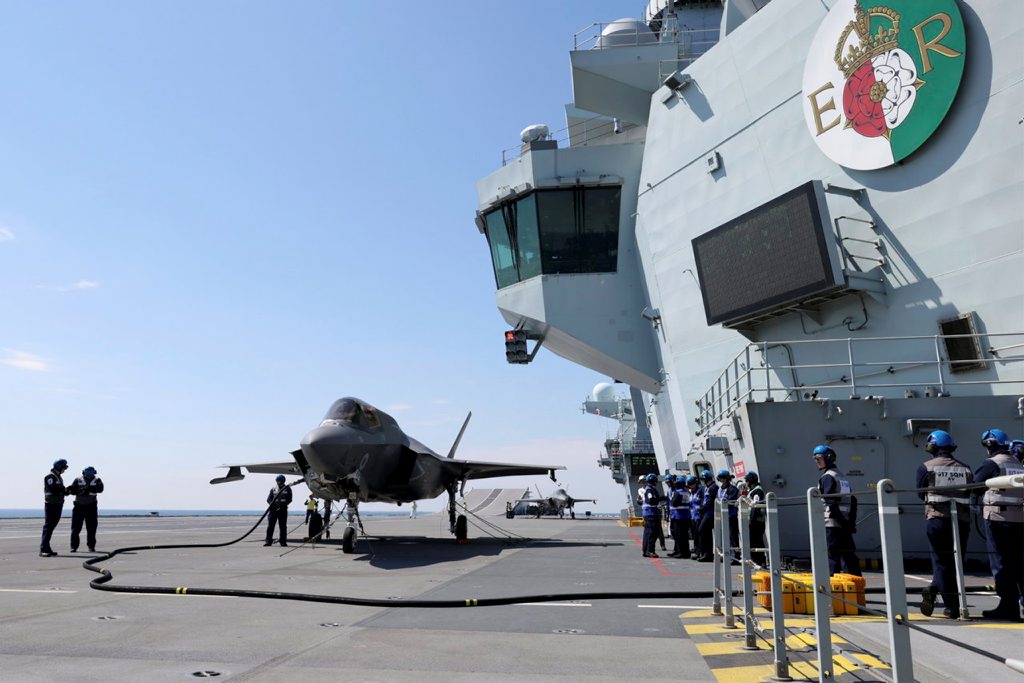
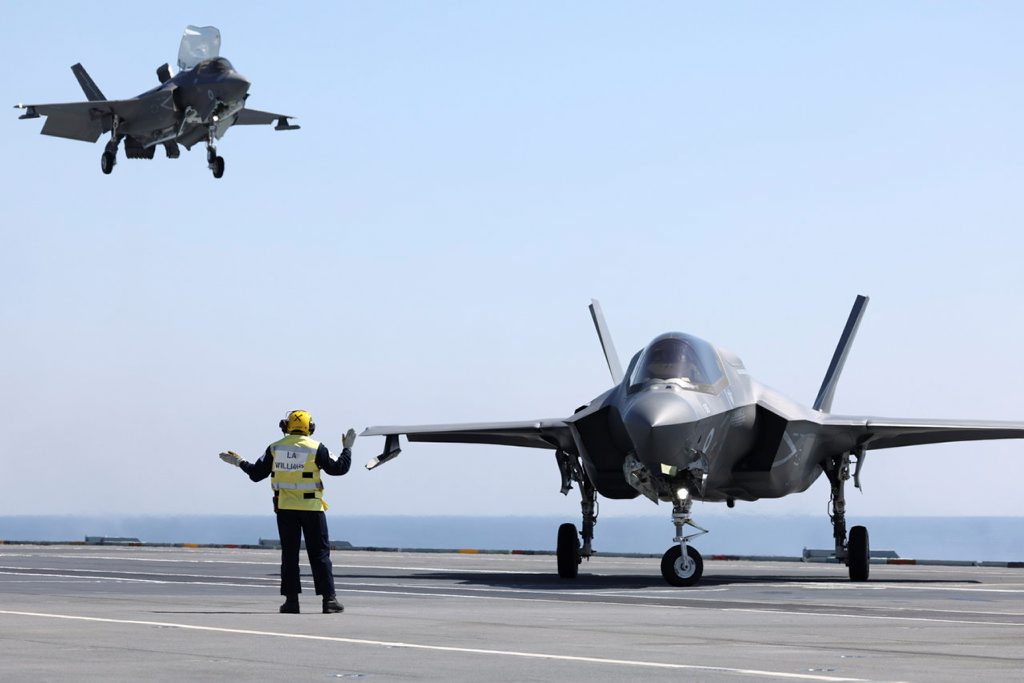
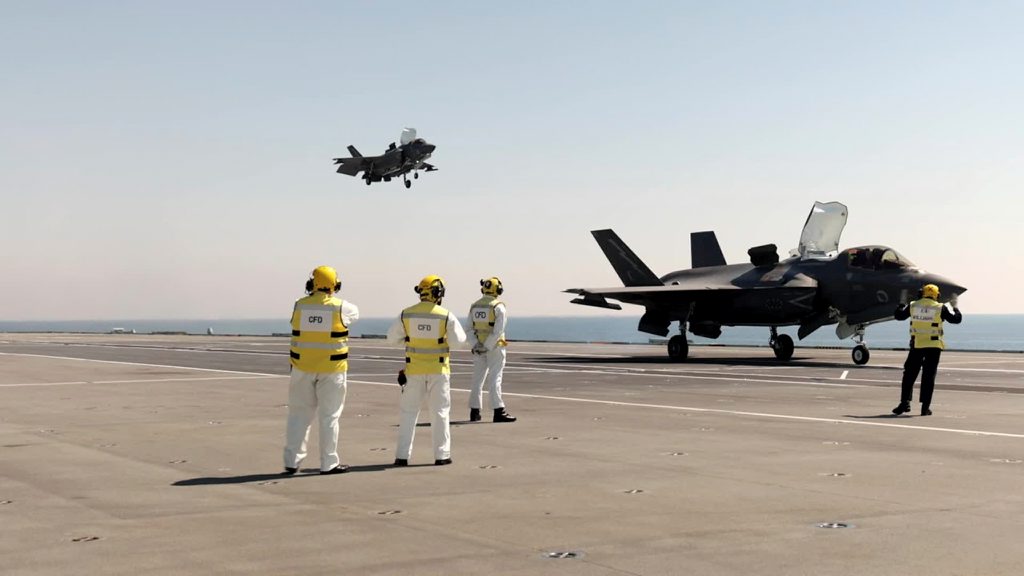
The first British F-35Bs, reportedly four aircraft, departed their base at RAF Marham in eastern England on May 2 to embark on HMS Queen Elizabeth. On the U.S. Marine Corps side, 10 F-35Bs arrived at RAF Lakenheath, home of the U.S. Air Force’s 48th Fighter Wing, in late April. According to eyewitness reports, nine of those jets had departed Lakenheath for the carrier as of May 3 and, should all those jets go aboard, that would provide an impressive 18-strong fixed-wing component.
Ahead of CGS21, the Carrier Strike Group, including embarked aircraft, will take part in a two-week series of maneuvers, Exercise Strike Warrior, off the Scottish coast. This will involve more than 20 warships, three submarines, and 150 aircraft from 11 nations.
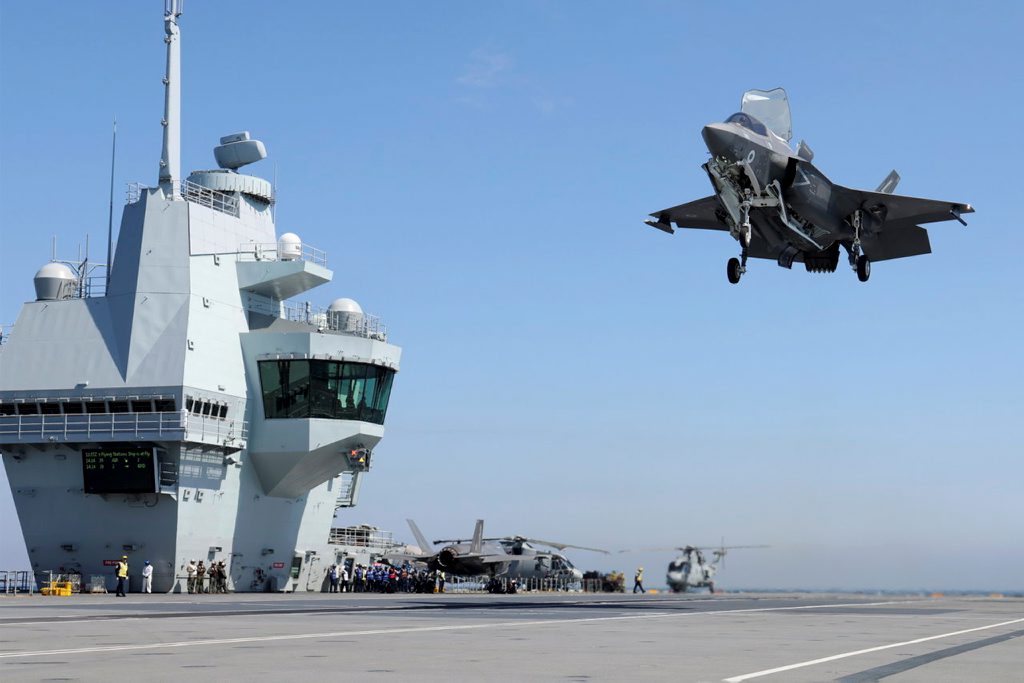
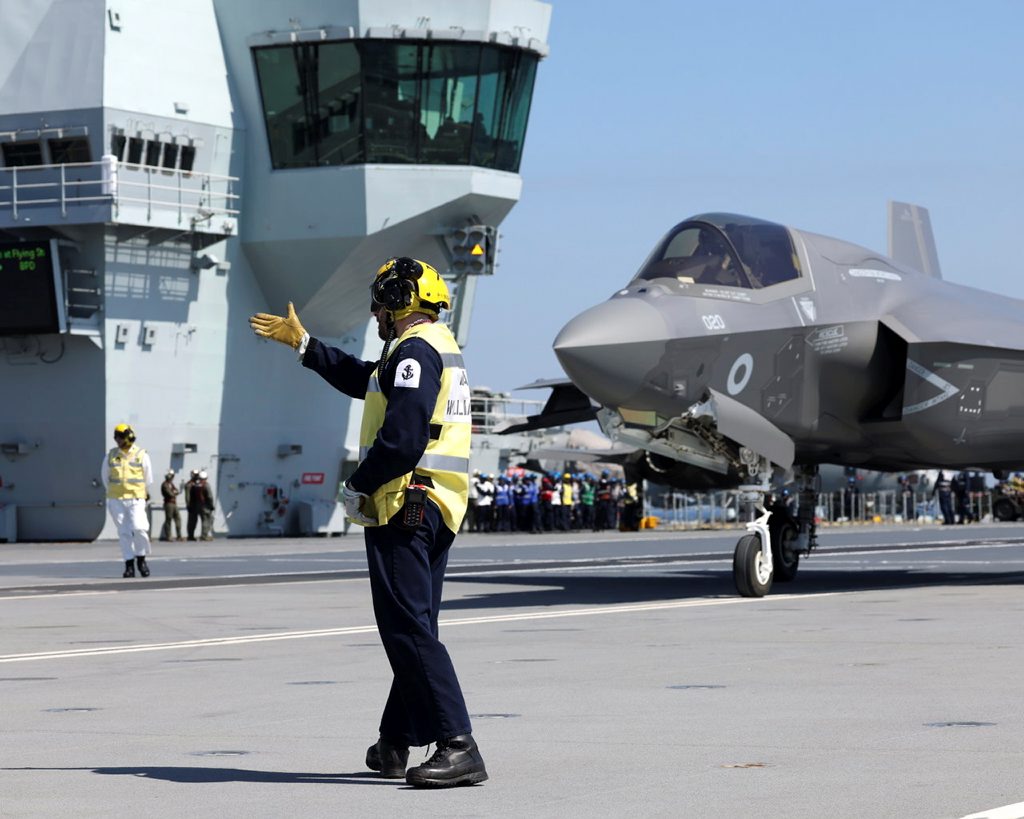
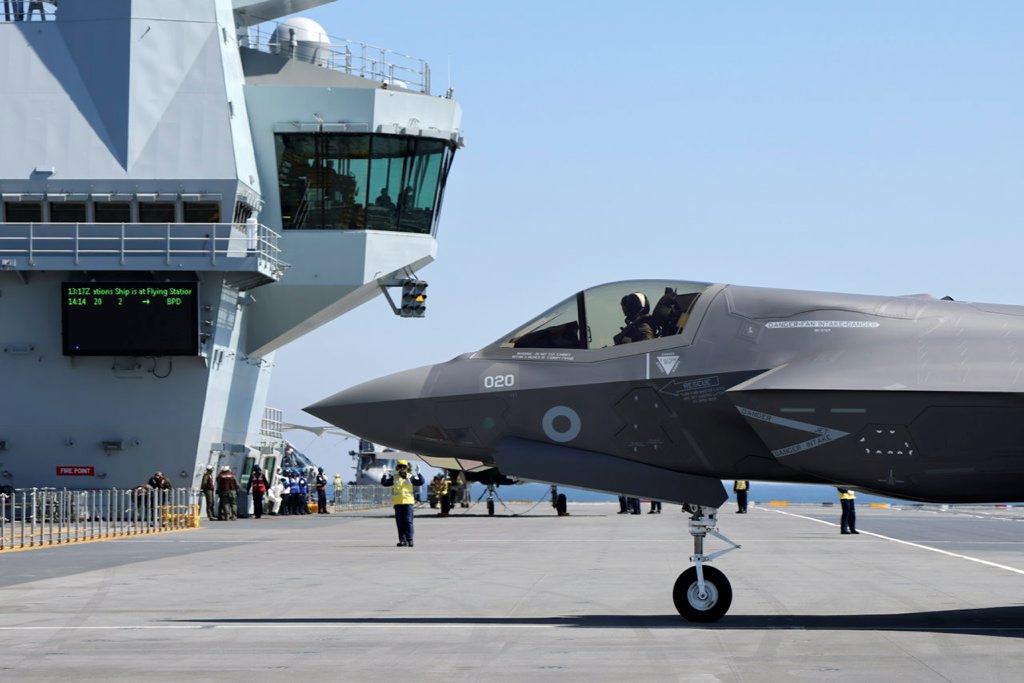
The culmination of Strike Warrior will see the Carrier Strike Group certified ready for deployment, setting the stage for CSG21, which is described by the U.K. Ministry of Defense as “the largest concentration of maritime and air power to leave the U.K. in a generation.” The ministry says the deployment is “committed to confronting persistent threats around the world and [will] make a meaningful contribution to global security.”
The 28-week CSG21 deployment will cover around 26,000 nautical miles and take in the Mediterranean, Indian Ocean, and the Asia-Pacific regions. It includes planned visits to India, Japan, South Korea, and Singapore, as well as cooperation with the armed forces from each nation.
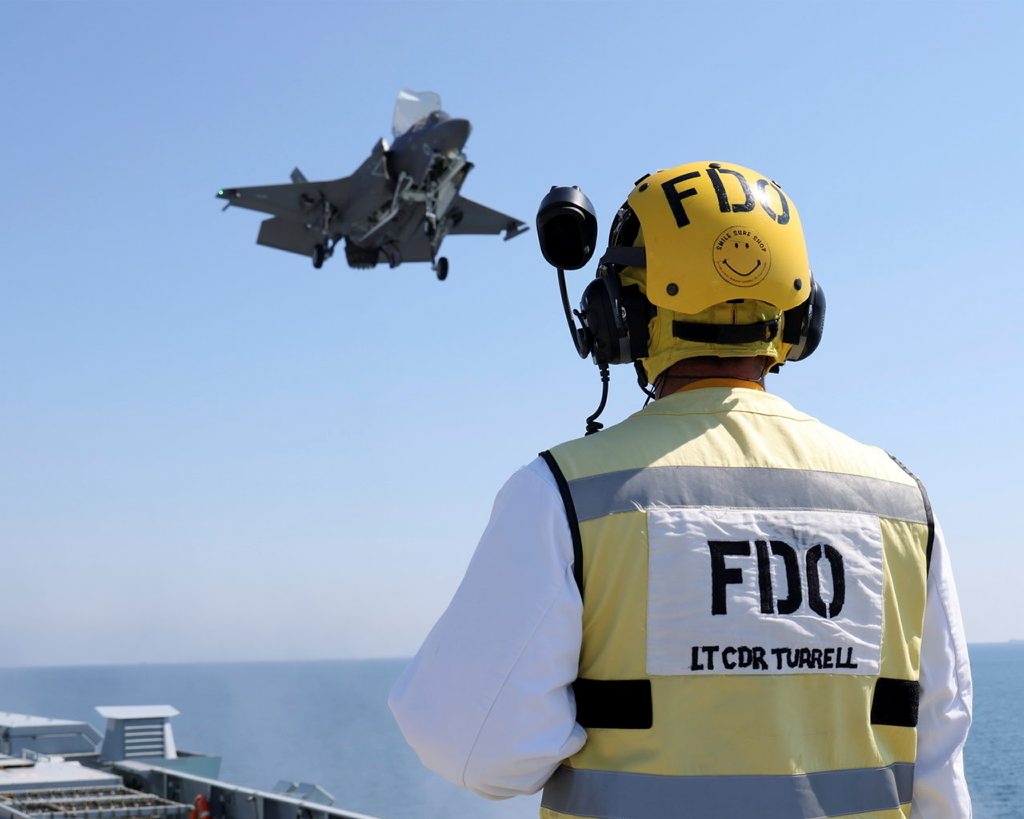
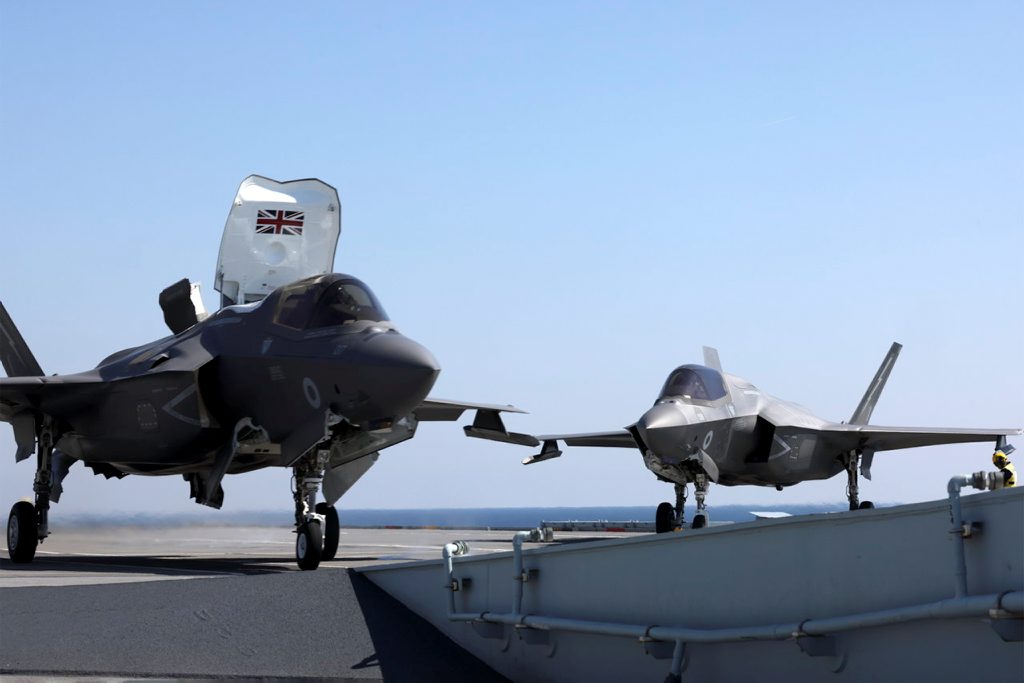
Alongside HMS Queen Elizabeth, the remaining Royal Navy CSG21 complement will comprise the Type 45 destroyers HMS Diamond and HMS Defender, the Type 23 class frigates HMS Kent and HMS Richmond, the replenishment tanker RFA Tidespring, the stores ship and fleet tanker RFA Fort Victoria, and an undisclosed Royal Navy Astute class nuclear attack submarine. Other warships joining them will be the Arleigh Burke class destroyer USS The Sullivans, and the Dutch De Zeven Provinciën class frigate HNLMS Evertsen.
F-35Bs are being provided by No 617 Squadron and the U.S. Marines Corps’ Marine Fighter Attack Squadron (VMFA) 211, the “Wake Island Avengers,” home-based at Marine Corps Air Station Yuma in Arizona. Meanwhile, helicopters for CSG21 will include multi-purpose Wildcat HMA2s from 815 NAS, anti-submarine warfare and airborne early warning and control Merlin HM2s from 820 NAS, and Commando Merlins from 845 NAS.
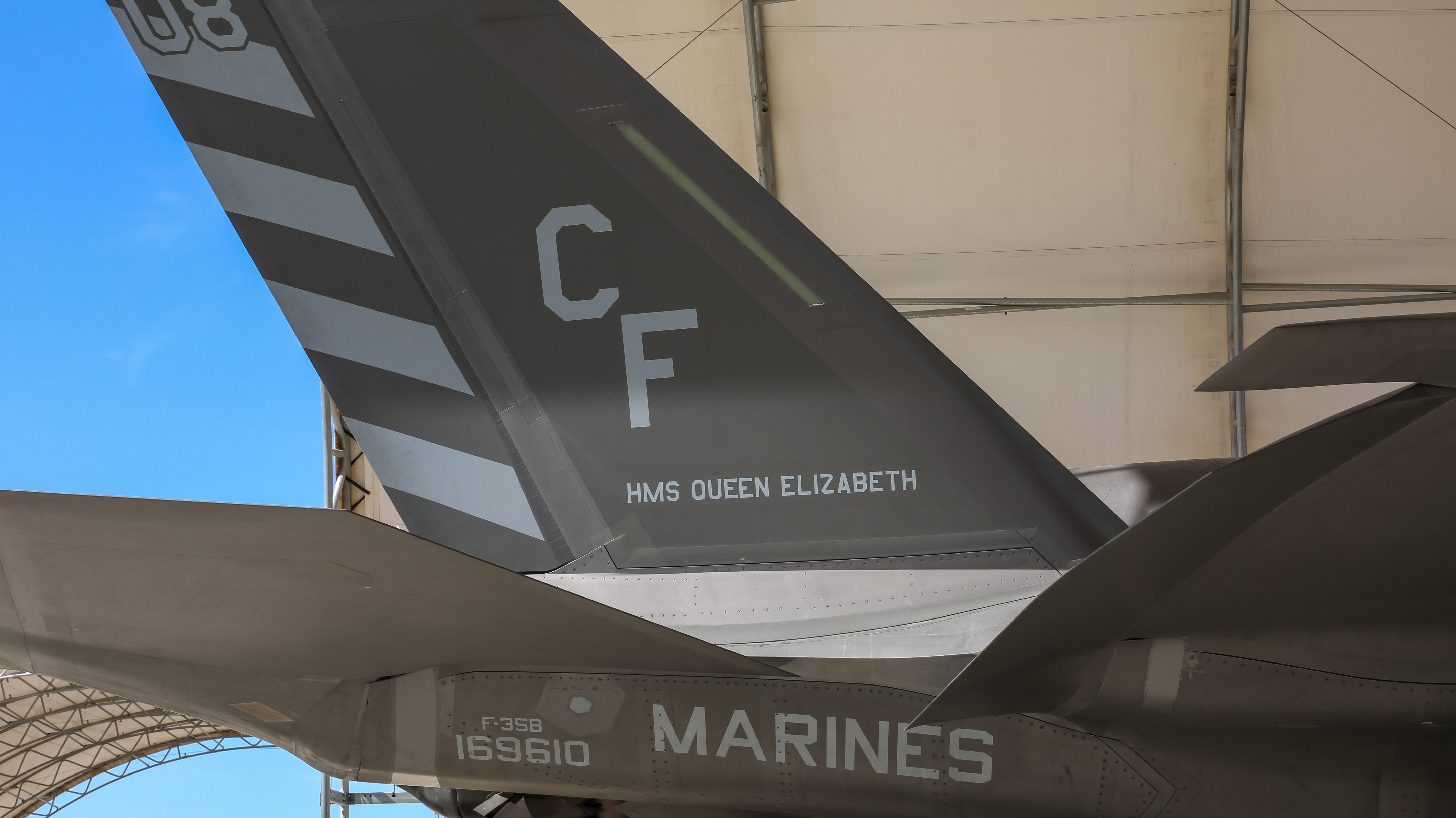
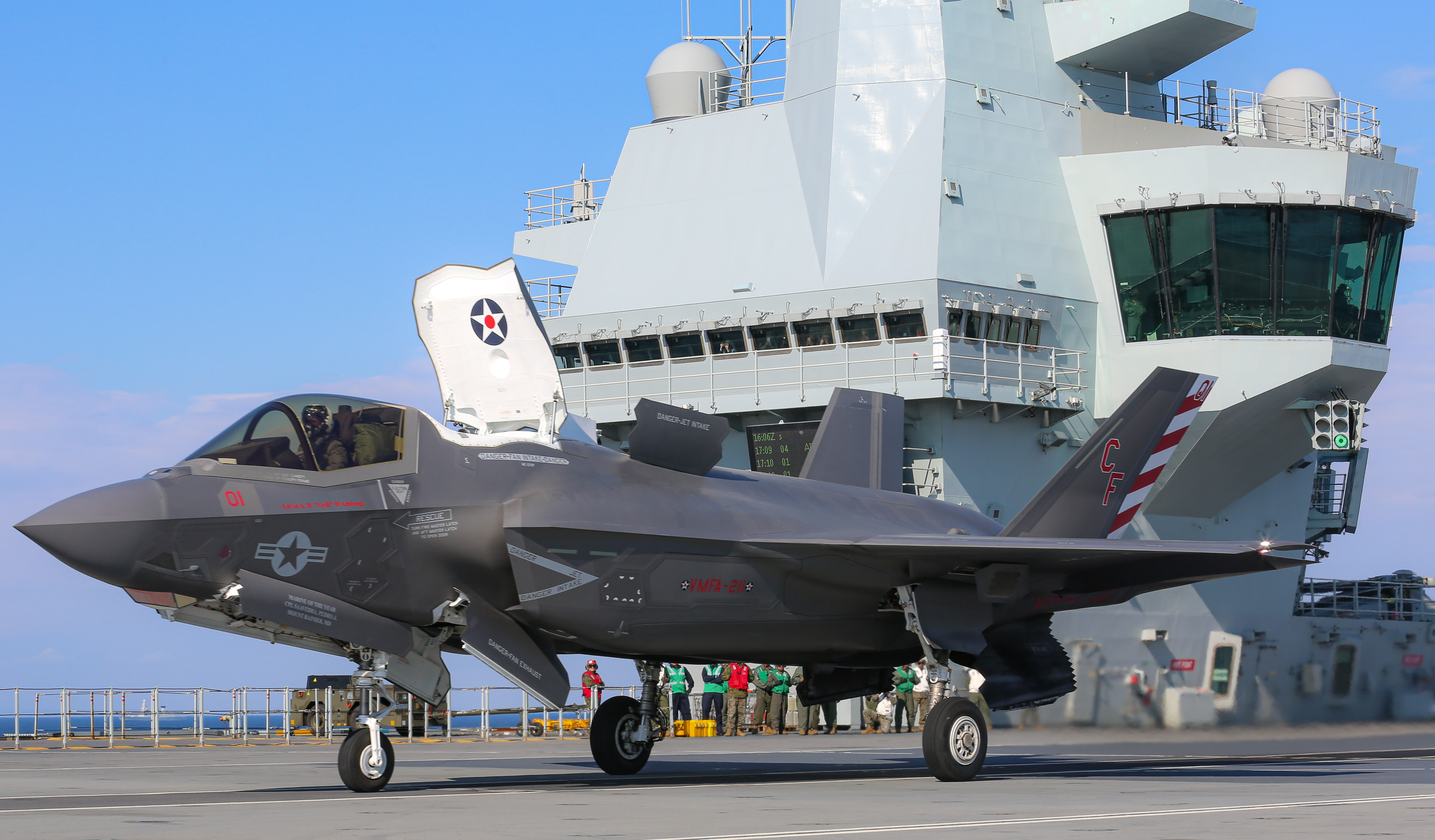
The Crowsnest Merlin helicopters, in particular, are a key component of CSG21, although this program has seen significant delays and full operational capability for the type will not now be declared until May 2023.
As for the Lightning, it was always clear that the Marine Corps would make up a significant proportion of any large-scale carrier deployment, at least in the near term, with only 18 F-35Bs having been delivered to the United Kingdom so far. As well as the carrier strike commitment, these jets are also required for other missions and training, a process that you can read about in detail here. With a continued question mark over the total number of F-35Bs the United Kingdom will finally order, it’s likely that the Marine Corps will remain an important part of future deployments by the two Royal Navy carriers, as well.
Regardless of the operator, the fact that such a significant number of F-35Bs will go aboard a carrier for an operational cruise is a significant achievement for the United Kingdom, as it steadily rebuilds a fixed-wing carrier capability that was lost for almost a decade. Indeed, there have been some claims that CSG21 represents a level of capability unmatched anywhere outside the U.S. Navy. The announcement that at least some of these jets will now also fly combat missions over the Middle East confirms that the powers that be have decided that the Carrier Strike Group is ready for real-world operations.
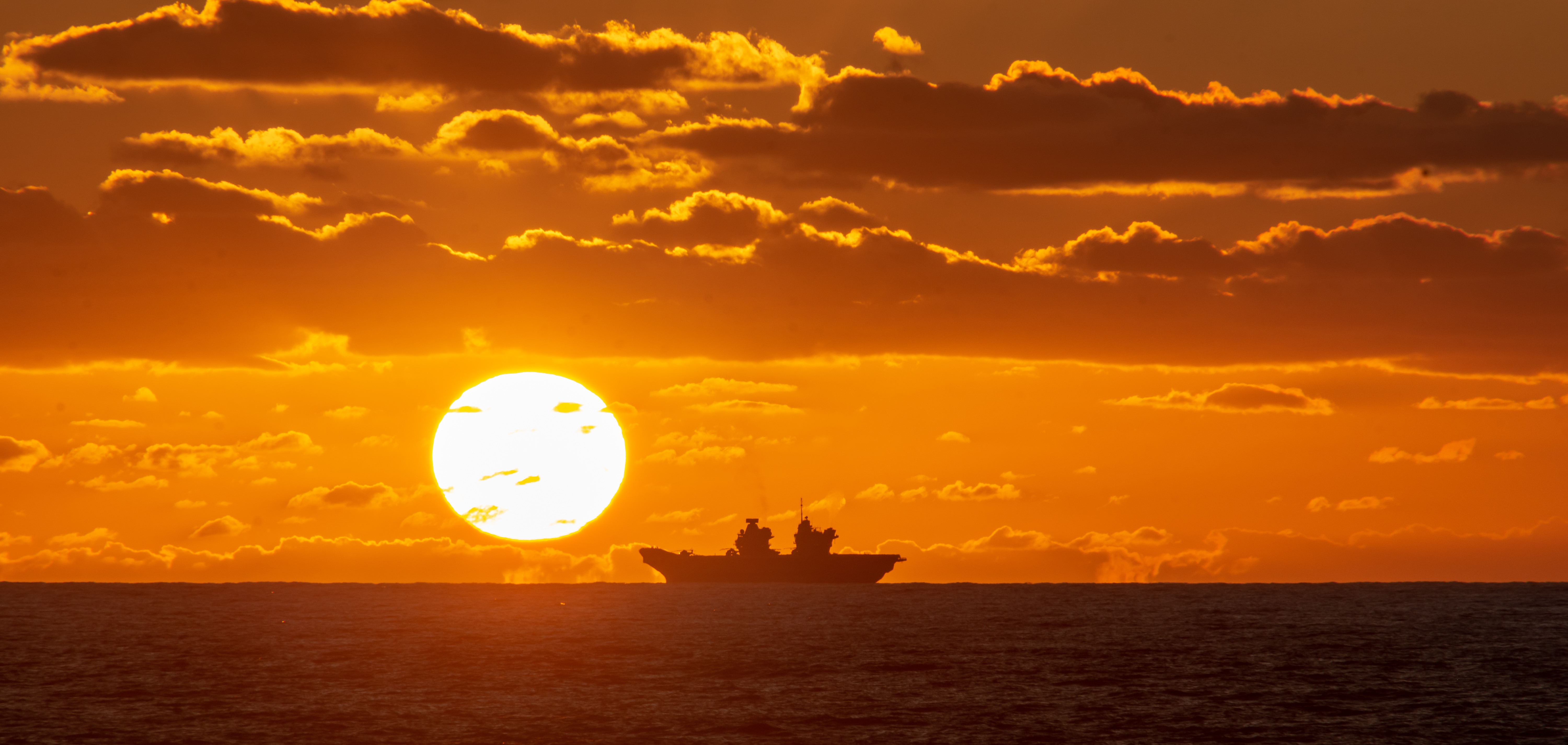
Contact the author: thomas@thedrive.com
